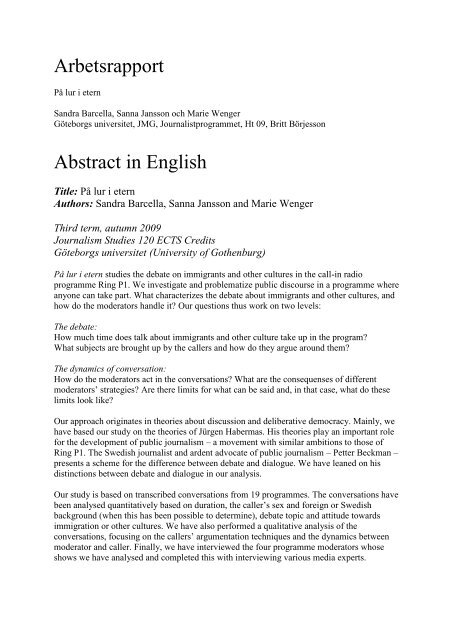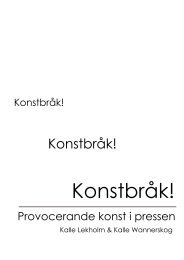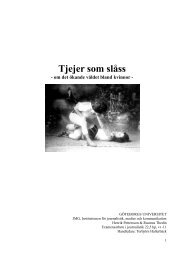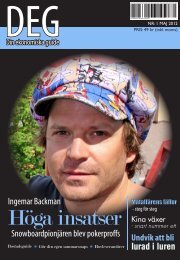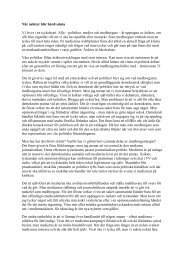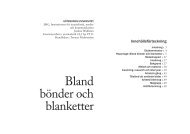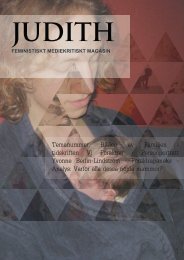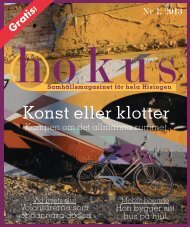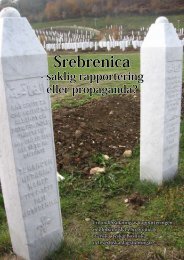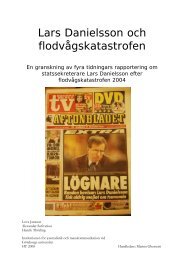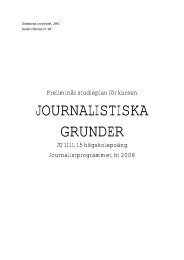Sverigedemokrater och slöjor i Ring P1 - Göteborgs universitet
Sverigedemokrater och slöjor i Ring P1 - Göteborgs universitet
Sverigedemokrater och slöjor i Ring P1 - Göteborgs universitet
- No tags were found...
You also want an ePaper? Increase the reach of your titles
YUMPU automatically turns print PDFs into web optimized ePapers that Google loves.
ArbetsrapportPå lur i eternSandra Barcella, Sanna Jansson <strong>och</strong> Marie WengerGöteborgs <strong>universitet</strong>, JMG, Journalistprogrammet, Ht 09, Britt BörjessonAbstract in EnglishTitle: På lur i eternAuthors: Sandra Barcella, Sanna Jansson and Marie WengerThird term, autumn 2009Journalism Studies 120 ECTS CreditsGöteborgs <strong>universitet</strong> (University of Gothenburg)På lur i etern studies the debate on immigrants and other cultures in the call-in radioprogramme <strong>Ring</strong> <strong>P1</strong>. We investigate and problematize public discourse in a programme whereanyone can take part. What characterizes the debate about immigrants and other cultures, andhow do the moderators handle it? Our questions thus work on two levels:The debate:How much time does talk about immigrants and other culture take up in the program?What subjects are brought up by the callers and how do they argue around them?The dynamics of conversation:How do the moderators act in the conversations? What are the consequenses of differentmoderators’ strategies? Are there limits for what can be said and, in that case, what do theselimits look like?Our approach originates in theories about discussion and deliberative democracy. Mainly, wehave based our study on the theories of Jürgen Habermas. His theories play an important rolefor the development of public journalism – a movement with similar ambitions to those of<strong>Ring</strong> <strong>P1</strong>. The Swedish journalist and ardent advocate of public journalism – Petter Beckman –presents a scheme for the difference between debate and dialogue. We have leaned on hisdistinctions between debate and dialogue in our analysis.Our study is based on transcribed conversations from 19 programmes. The conversations havebeen analysed quantitatively based on duration, the caller’s sex and foreign or Swedishbackground (when this has been possible to determine), debate topic and attitude towardsimmigration or other cultures. We have also performed a qualitative analysis of theconversations, focusing on the callers’ argumentation techniques and the dynamics betweenmoderator and caller. Finally, we have interviewed the four programme moderators whoseshows we have analysed and completed this with interviewing various media experts.


